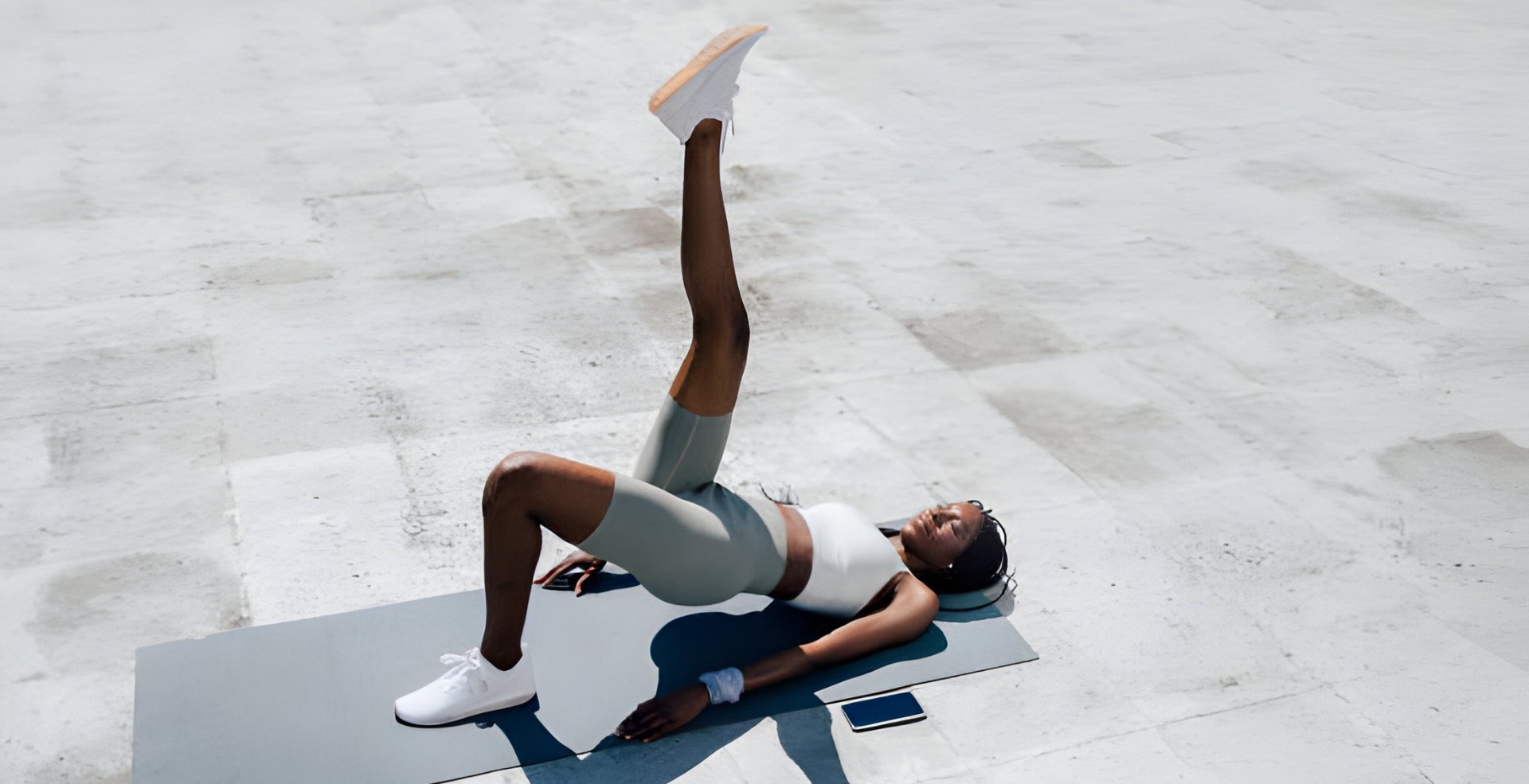We all know that Pilates is having its moment in the spotlight. Whether you’re into Reformer Pilates or prefer to work out at home, you can’t deny the importance of Pilates core moves in this fitness regimen.
One reason for their prominence is the roots of Pilates itself. Developed by Joseph Pilates as a rehabilitation method, Pilates prioritises core strength. Centering, one of its fundamental principles, focuses on engaging, controlling, and strengthening the core. Pilates referred to the core as the “powerhouse,” believing it to be the source of energy for the entire body. Hence, strengthening it was vital for overall fitness.
“As well as this, Pilates moves target the global muscle slings that work across the pelvis and body, the anterior, posterior, longitudinal, and lateral slings. This means that Pilates strengthens the core from the inside out and the centre of the body, that is the pelvis, from which all movement in the body stems,” explains Claire Mills, a physiotherapist and the founder of CoreLDN.
lazyloadAs someone who’s been strength training for a decade and running for over a year, I consider my core pretty strong. However, I’m always eager to enhance my functional strength, especially now as I’m recovering from a microfracture on my fifth metatarsal and gluteal tendonitis. I turned to Pilates core moves to support my recovery, seeking Mills’ recommendations for effective exercises.
How to strengthen your core with pilates
Firstly, I wanted to understand Mills’ approach to building core strength. “To improve core strength alongside running and strength training, I would aim to target the deep core muscles and abdominals alongside the global muscle system,” she advises. “Improving the endurance and control of these muscles in varying positions and postures will ultimately improve your performance.”
In simpler terms, this means working on all core muscles, including the obliques, not just the more commonly targeted muscle groups. A strong core is essential for overall well-being because it improves strength, muscle tone, posture, and quality of life.
What pilates core moves should you try?
Mills shares some of her favourite exercises, which target various core areas and contribute to overall strength and stability. However, keep in mind that these moves are general recommendations, and it’s essential to consult with a coach, physiotherapist, or personal trainer before incorporating them into your routine. Remember, however, that this approach isn’t suitable for everyone and you should adjust it to fit your fitness level, goals, and requirements.
1. Double table top overhead arms
This move targets deep abdominals and challenges larger ab muscles, essential for core strength and stability.
How to: Lie on your back in a double tabletop position. Reach your arms overhead while keeping your spine neutral and your legs in a double tabletop position. For added intensity, place a Pilates ball between your knees and hold weights in your hands while squeezing the ball as your arms extend overhead.
2. Dead bug
Effective for targeting all abs and improving control across the midline and pelvic muscles.
How to: Lie on your back in a double tabletop position. Extend the opposite arm and leg while exhaling, focusing on controlling the movement and engaging deep abdominals and pelvic floor. Inhale as you return to the starting position and alternate sides.
3. Criss cross
A challenging exercise that targets obliques while maintaining control in the deep, upper, and lower abdominals.
How to: Lie on your back and lift your shoulder blades off the mat. Rotate your upper body and shoulders towards the opposite hip while extending the other leg. Return to the centre without lowering your upper body and then switch sides.
4. Bird dog
Great for working the entire body and maintaining control of the back and pelvis during movement.
How to: Start on all fours and extend one leg and the opposite arm straight, lifting them off the floor while keeping hips and midsection stable. Lower back down with control and repeat, ensuring the stationary knee hovers off the floor for added challenge.
5. Bear hold
This exercise challenges deep and lower abdominals to support the spine against gravity.
How to: Begin in a four-point box position with hips over knees and shoulders over wrists. Engage deep abdominals and pelvic floor, hover knees off the mat while keeping the back neutral, then lower with control.
6. Side plank (on forearm and knees)
A challenging move that targets the lateral line while improving strength in shoulders, abdominals, and hips.
How to: Start on your forearm and lift into a modified side plank using shoulder strength, waist, and hips. For added difficulty, hold the side plank and perform leg lifts with the top leg.
How to incorporate pilates core moves into your routine
With reps and intensity, Mills suggests adjusting based on your workout frequency. For daily workouts, avoid training muscles to extreme fatigue to prevent injury. Instead, aim for a good core workout three times a week that takes you to failure or perform lower-level Pilates exercises daily for ten minutes to focus on deeper core muscles.
As I planned to train daily, I opted for the latter approach—controlled and gentle reps to activate and engage my core muscles without overexertion.
Reflecting on my pilates core challenge
On the first day, I made the mistake of adding Pilates core moves after my strength training workout. My core was already fatigued from assisting with lifts. However, I appreciated the variety in the exercises, which balanced dynamic movements with isometric holds.
For the rest of the week, I incorporated the core routine into my warm-up, noticing improved activation during subsequent workouts. Despite experiencing muscle soreness, I adjusted the intensity to avoid overexertion.
By the end of the challenge, I didn’t notice significant strength gains, but I developed better mind-muscle connection and activation skills. Moving forward, I plan to continue integrating Pilates core moves into my routine to address weaknesses and enhance overall stability and strength. While the challenge may be over, the benefits of Pilates core exercises are undeniable.
This article was syndicated from Marie Claire UK
Translated and adapted by Praise Vandeh, Marie Claire Nigeria Content Writer


